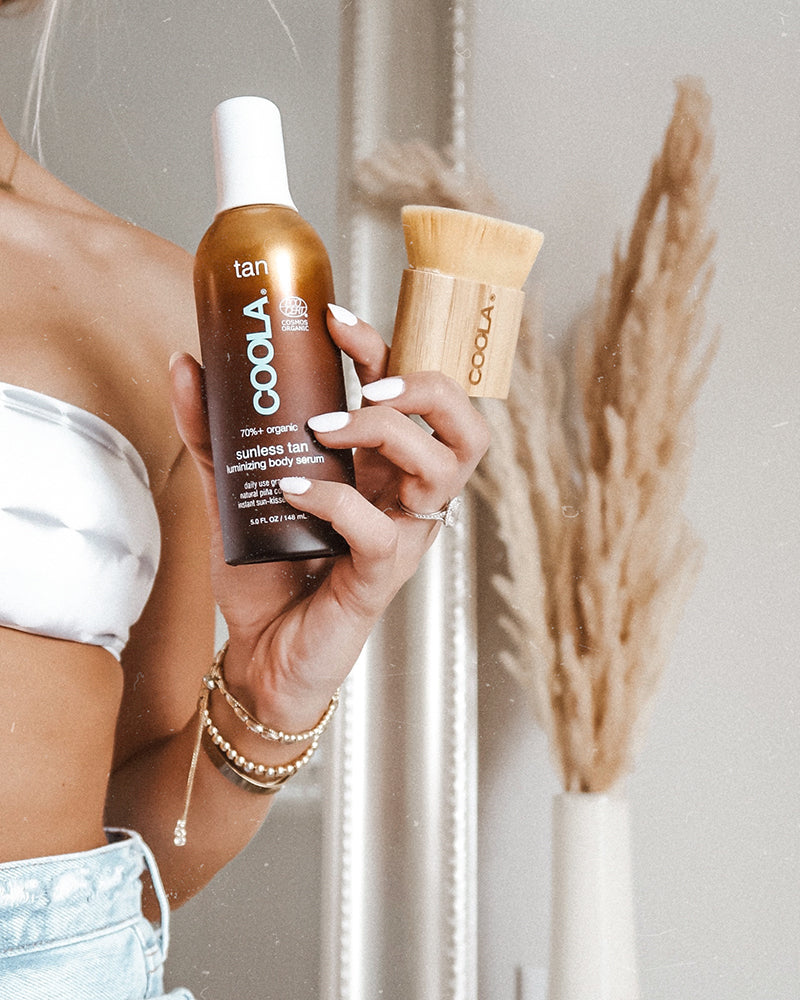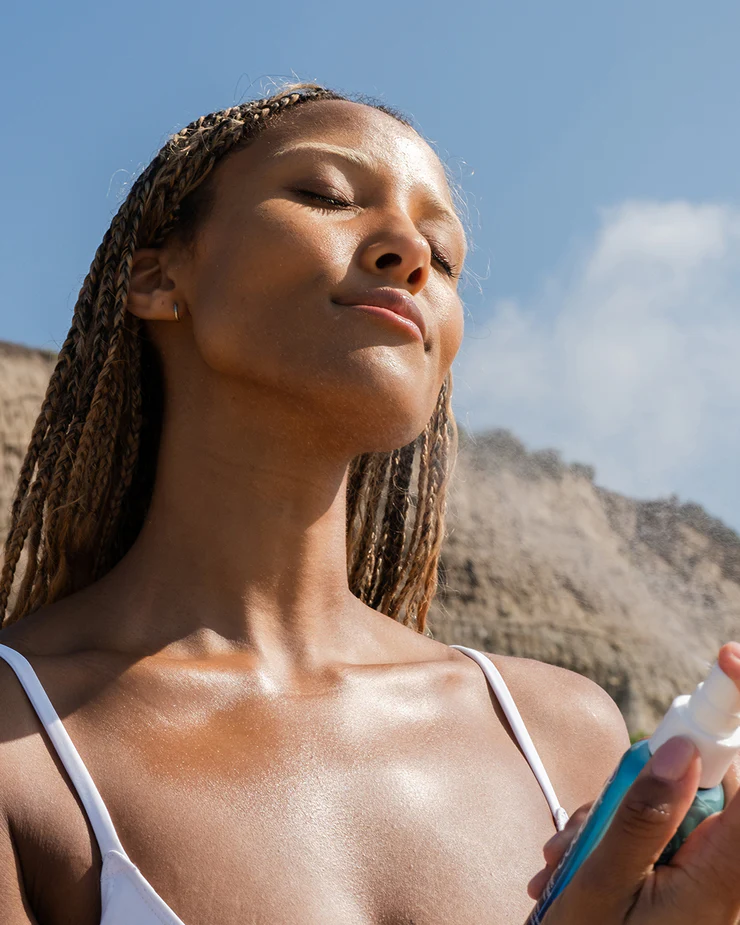The devices we use every day have a real impact on our skin’s aging process. Here’s what you need to know about blue light and infrared radiation, and how to incorporate digital smart skincare into your regimen.
What is
BLUE LIGHT, ALSO KNOWN AS HEV LIGHT?
By now, most of us know that the sun’s UVA and UVB rays damage skin (and if you want to know how, visit our Sun Science page). Wearing sunscreen year-round has become the norm, and we assume that once we’re indoors and away from direct sunlight, our skin is out of harm’s way.
Not so fast. There’s another part of the electromagnetic spectrum - that’s the scientific term for all forms of light - that can mess with our complexion, and it’s all around us. It’s called blue light (also known as high energy visible light, or HEV), and it’s the strong light that emits from the screens on cell phones, computers, tablets, and TVs, as well as from fluorescent and LED lighting. The sun also emits blue light, so you’re exposed to it when you’re outside, too. Yep, it’s everywhere.
Considering we spend up to 12 hours a day in front of digital screens, we’re often getting a lot more exposure to blue light than we are to UV. Blue light is part of what’s referred to as digital pollution - and just like environmental pollution, it’s taking a toll on the health of our skin.
 Why is
Why is
BLUE LIGHT BAD FOR YOUR SKIN?
All light is made up of electromagnetic particles that travel in waves. The waves vary in length and strength, but all emit energy. The shorter the wavelength, the more energy it gives off. We can’t see every form of light, but the ones we can see are called visible light.
Blue light is a visible light, and it has a very short wavelength, meaning it gives off a lot of energy. Unfortunately, it’s not the kind of energy we want - in fact, it’s basically kryptonite to our skin.
Research indicates that blue light can reach deeper into our skin than UVA and UVB rays, passing through both the epidermal and dermal layers to reach the subcutaneous tissues - and perhaps even deeper. And it’s causing trouble all along the way.
One study suggests that blue light may be as harmful to skin as UVA and UVB light combined. It causes a similar type of damage as UVA by creating free radicals, which are nasty little molecules that contribute to skin aging and skin cancer. More specifically, blue light seems to disrupt how melanocytes function, which are the cells that produce melanin - the brown pigment that gives our skin color and helps protect against UV light. When melanocytes are out of whack, it can lead to brown spots and other forms of uneven skin tone such as melasma, which creates blotches of dark skin on the face.

What is
INFRARED RADIATION?
Basically, it’s science speak for heat. Infrared radiation, or IR, is another form of light along the electromagnetic spectrum. But unlike blue light, infrared is invisible, so we don’t see it. We feel it as heat, and it releases from any object that gives off warmth, from the sun to a cooking grill to digital devices. And the hotter something is, the more IR it produces.
There’s nothing wrong with infrared radiation in small doses. In fact, controlled, moderate levels of IR can actually be good for the skin, helping trigger collagen and elastin (which is why you see infrared technology in in-office and at-home anti-aging light devices). But excess levels of IR are another form of digital pollution, and they’ve been linked to skin spots and melasma. And since we’re surrounded every day by devices that give off heat, it’s safe to assume that we’re often overexposed to IR.
The Hard Truth
DIGITAL OVERLOAD?
Considering we spend up to 12 hours a day in front of digital screens, we’re often getting a lot more exposure to blue light than we are to UV. Blue light is part of what’s referred to as digital pollution - and just like environmental pollution, it’s taking a toll on the health of our skin. SPF stands for sun protection factor. Sunscreens are classified by an SPF number which refers to their ability to deflect UVB rays. The SPF rating is calculated by comparing the amount of time needed to burn sunscreen-protected skin vs. unprotected skin.
Use a broad spectrum SPF of 30 or higher to protect not only against sunburn, but reduce the risk of skin cancer and premature skin aging caused by the sun.

SHOP OUR FULL SPECTRUM PRODUCTS HERE
Blog courtesy of coolasuncare.com




